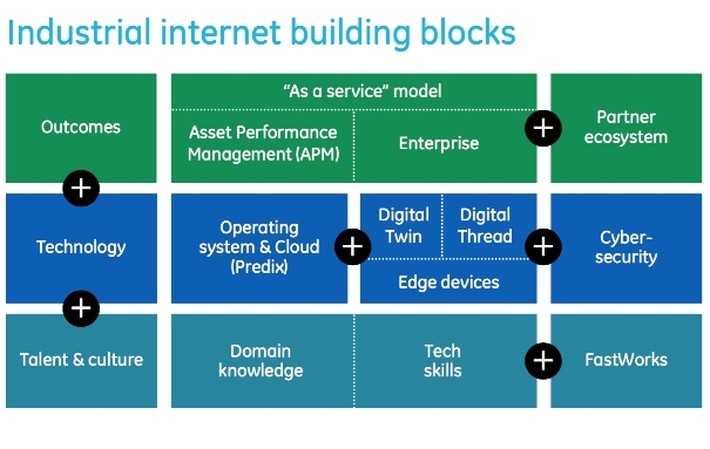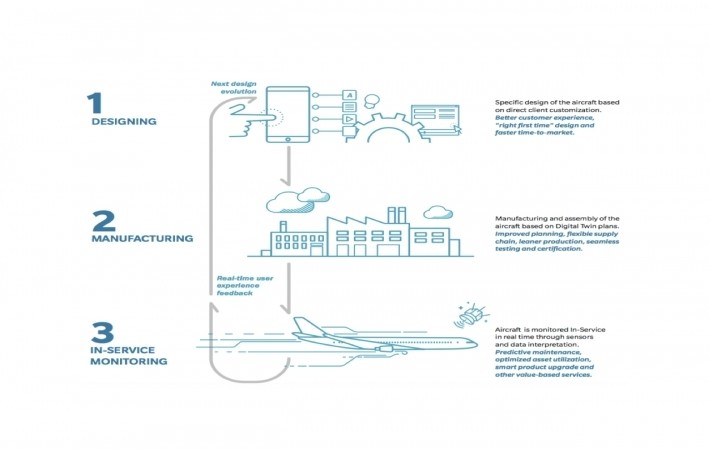
Published on 01/18/2017 | IoT Index
After an asset is sold it traditionally 'goes dark'. Manufacturers lose access to the asset and the knowledge derived from its data. As Sir Francis Bacon declared, knowledge is power. And power can be monetized, as exemplified by Angolan President dos Santos's $20 billion piggy bank. Digital twins are putting assets back on the map and power in the hands of the platform owner.
GE's VP of software research Colin Parris defines a digital twin as a "living model of something that delivers a business outcome". They take the guesswork out of data collection by maintaining an accurate digital representation of a physical asset that evolves as the asset ages.
GE is far from the only company in the game. CATIA Systems’ senior director of Sales, Eliane Fourgeau notes that "product complexity is driving a need to [...] create convergence between the real and virtual worlds." If go-to-market speed and service integration are priorities, you should be looking into digital twins.
CATIA Systems' competitors in the CAD space - PTC, Siemens and Autodesk - are also bullish on the concept. Although companies disagree on implementation details, there is consensus that a digital twin can bring efficiencies to design, production and serviceability.

The explosive growth of the IIoT is fueling the race to bring digital twin systems to market. Among the numerous hardware, software and service inputs into Industrial IoT solutions, analytics platforms are best positioned to monopolize markets.
GE Predix has taken the early lead by leveraging GE's businesses to prove out the concept. Thus far, the technology only extends Predix's reach into GE's industrial assets and manufacturing processes. But you will soon be able to license digital-twin-as-a-service in a range of industries.
In contrast, Siemens chose to stick to its roots in factory automation. Their launch is lagging GE's but their focus on industry verticals, rather than on a horizontal platform, may accelerate adoption.
It's unlikely that a single platform will dominate the market. Horizontal platforms are an attractive monopoly play but vertically oriented solutions are more likely nail product-market fit.
The digital thread is a communication framework for data flow throughout an asset's lifecycle. The digital thread raises the bar for delivering "the right information to the right place at the right time".
But the billion-dollar question is: how does the digital thread enable the digital twin? The digital thread provides a framework for accessing, integrating, transforming and analysing data from disparate systems throughout the asset lifecycle. In short, it links real world assets with their digital doppelgangers in near real time.
The current approach to handovers is "throw-over-the-wall": after each team finishes their job, they "throw it over the wall" to next department. Using digital twin and digital thread solutions, departments can access accurate historical records of an asset, and can project its future development.
The Industrial Internet Consortium is implementing an Industrial Digital Thread (IDT) testbed to streamline design, manufacturing, service setup and root cause analysis for industrial manufacturing. Catch Dr. Richard Solely, Chairman of the IIC at the IoT Evolution Expo this Feb to learn about the IDT and other testbeds.
Before companies open their wallets they need more than promises of "reduced down-time" and "departmental synergies". They need to see a bucket of ROI at the end of the rainbow.
So let's take a look at the numbers: GE thought leader Dimitri Volkmann claims that anomaly detections from flights have been reduced by 15 - 30 days, lifecycle predictions for turbine blade models has contributed $44 million in savings, and optimisation of flight patterns and maintenance has resulted in $10 million in savings. Airplanes are at the apex of high-value assets and are a prime early adopter of digital twin and digital thread solutions.
Meanwhile, CSC is building a digital twin for a hybrid-car manufacturing process that predicts how a car will perform before committing to expensive changes in production. Digital twins of new models are analysed with different transmission, vehicle classes, engine displacements and fuel types to optimize the design. On average, the digital twin predicted city driving efficiency within 1.5 mpg.
Artificial Intelligence, Automation and the Economy
The analysis and recommendations included herein draw on insights learned over the course of the Future of AI Initiative and Federal Government coordination efforts and public outreach on AI and related policies.
Avoiding the App Trap in Enterprise IoT
Focusing on an app distracts from or avoids entirely the much more critical system design work necessary for true enterprise IoT to succeed. A careful balance needs to be struck between system and project needs.
A Fresh Approach To Remote IoT Connectivity
Today's networks are not designed to support the growth in traffic forecasted for the IoT. Future-proof connectivity requires additional design features and what are the connectivity partners that can provide the best options.